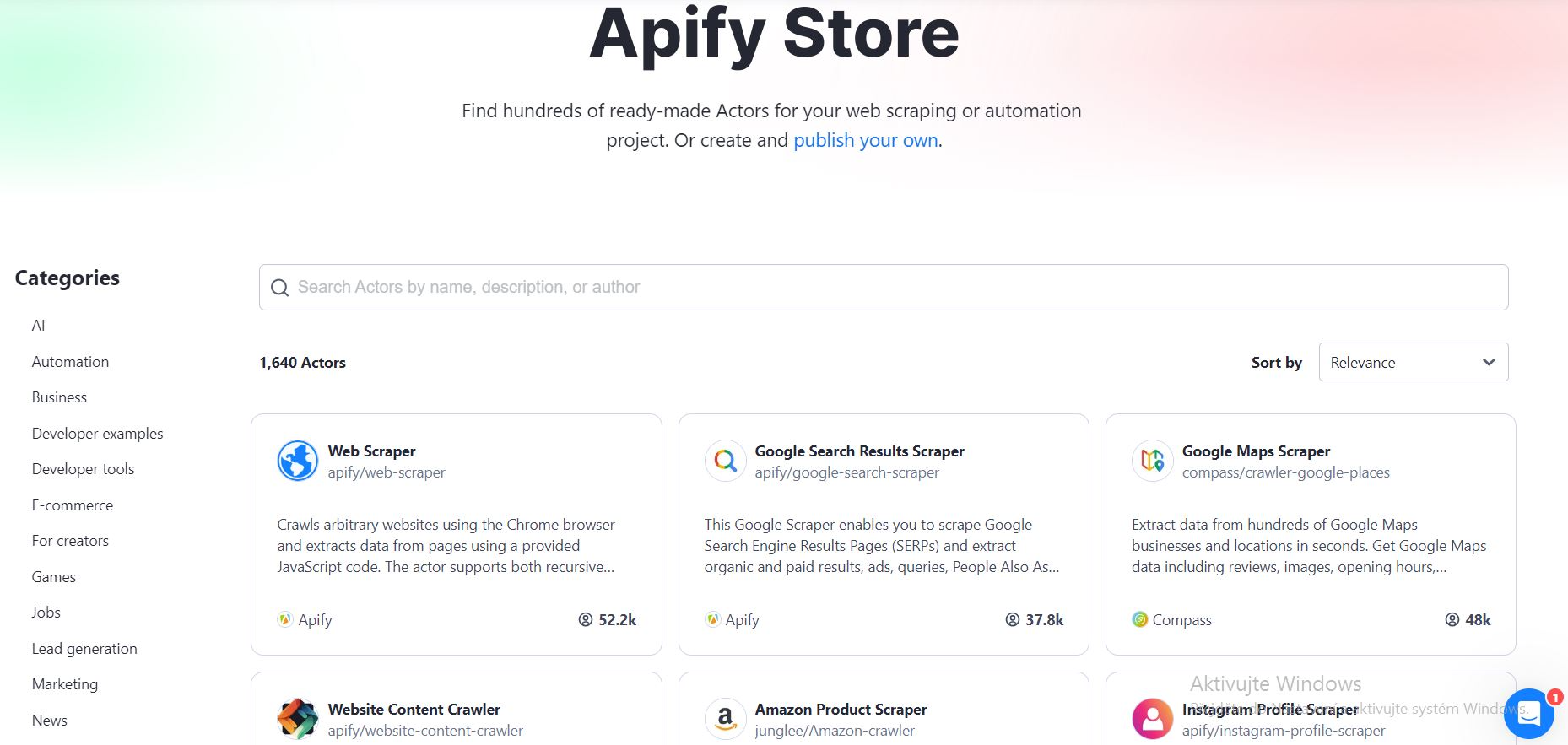The digital revolution has created an era where data is the new oil. Big data, in particular, has emerged as a potent force in various fields, driving decision-making and informing strategies across sectors. It allows businesses to make data-driven decisions and gain a competitive edge by providing deep insights into customer behaviour, market trends, and operational efficiency. However, harnessing the power of big data is more complex than it seems. A critical step in leveraging this wealth of information is effectively gathering and processing it – a task where tools like web crawlers shine.
As the amount of online data grows exponentially, the demand for efficient, robust, and reliable web crawlers is rising. However, with a plethora of options available, choosing the right tool can take time and effort. Each web crawler tool has unique features and capabilities that cater to different needs, technical backgrounds, and budgets.
This article aims to simplify this task by exploring the top six web crawler tools for 2023. Each of these tools is equipped with distinct features designed to help businesses, developers, and data scientists harness the potential of big data effectively and efficiently. So, whether you’re a seasoned programmer seeking advanced functionalities or a novice in data extraction, you’ll find a tool that fits your needs.
1. Crawlbase: The Premier Tool for Uncompromised Data Access
Rounding off our list with an impressive offering is Crawlbase, a sophisticated platform developed by a team of software professionals with a staunch commitment to data freedom. This tool goes beyond the boundaries of a typical web crawler, providing an accessible portal for developers and corporations to leverage the wealth of internet data seamlessly.
Crawlbase embodies a vision of unrestricted access to the internet’s vast expanse of information. Its adaptability is noteworthy, catering to a broad spectrum of users. Whether a small-scale developer or a large corporation with intensive data needs, Crawlbase accommodates all plans starting from a budget-friendly $29 per month. Not to forget, Crawlbase offers a free plan with limited features, presenting a no-risk opportunity to experience its potential before a financial commitment.
Above all, Crawlbase deserves special attention from web crawlers, thanks to its steadfast dedication to data freedom, flexible pricing options, and robust platform. Its mission to democratize access to internet data, coupled with its powerful and comprehensive toolset, firmly establishes Crawlbase as a go-to tool for big data projects in 2023.
2. Scrapy: Open-Source and Efficient Web Crawling
Moving forward, we encounter Scrapy, an open-source, Python-based web crawling software highly valued by developers for its adaptability and robust structure. As an open-source tool, Scrapy affords a high degree of flexibility, enabling programmers to tailor the web crawler to their needs.
Scrapy stands out for its resource efficiency, consuming minimal CPU and memory while managing large-scale data extraction. Moreover, its asynchronous functionality allows multiple web pages to load concurrently, significantly improving the speed of web scraping and processing.
However, Scrapy has its challenges. Antibots can occasionally detect it and struggles with dynamic web pages. Nonetheless, its free-to-use nature and cross-platform compatibility make Scrapy a notable contender among the top web crawlers for big data in 2023.
3. Octoparse: User-Friendly Web Crawling with Advanced Features
Introducing Octoparse, a no-code web crawling tool praised for its accessible interface and proficiency in handling dynamic web pages. Octoparse stands out with its Point-and-Click interface, removing the need for coding skills and making it ideal for beginners.
Octoparse’s capacity to process dynamic websites and its feature for automatic IP rotation make it a versatile tool, enabling it to bypass antibot measures. However, it needs a Chrome extension and a feature for extracting data from PDF files.
Despite these limitations, Octoparse’s flexible pricing scheme, starting with a free version and offering standard packages from $89 per month, solidifies its place among the top web crawler tools for 2023. Its user-friendliness and advanced capabilities cater to a broad range of users.
4. Zyte (formerly Scrapinghub): User-Friendly Data Extraction in the Cloud
Next is Zyte, a cloud-based data extraction tool previously known as Scrapinghub. Zyte leverages APIs for data extraction, making it an efficient tool in the big data landscape. Notable features include smart proxy management, headless browser support, and residential proxies, adding versatility to its utility.
One of Zyte’s strong points is its user-friendly interface, simplifying user navigation. Furthermore, Zyte is recognized for its excellent customer service, helping users to resolve any issues they may encounter swiftly. The service offers automatic proxy rotation, support for headless browsers, and geolocation capabilities, enhancing its value in data extraction projects.
However, Zyte’s lower-tier service plans come with bandwidth restrictions, potentially limiting the amount of data that can be extracted. Moreover, access to advanced features requires add-ons, which can increase costs. Despite these limitations, Zyte remains a formidable contender due to its cloud-based structure, user-friendly approach, and comprehensive features.
5. ScraperAPI: Simplified Web Scraping for Developers
Our journey continues with ScraperAPI, a solution particularly beneficial for developers building web scrapers. With ScraperAPI, developers can easily fetch raw HTML from any website with just one API request, simplifying the extraction process.
ScraperAPI has useful features, including proxy server support, browser support, and CAPTCHA handling. This makes it an efficient tool for automated processes, allowing developers to extract valuable insights and information from websites swiftly.
However, the tool has limitations, particularly for smaller plans with stricter restrictions. Moreover, scraping dynamic websites can be challenging with ScraperAPI. Despite these drawbacks, its ease of use, robust proxy pool, and excellent customization options contribute to its standing as a leading web crawler for big data in 2023.
6. ParseHub: A Powerful Ally for Data Extraction
As we begin our exploration, we find ParseHub, a compelling web crawling tool that handles dynamic web pages. Thanks to machine learning, ParseHub successfully navigates the complex terrain of these interactive pages, making it a frontrunner in the web crawling sphere.
Notably, ParseHub’s user-friendliness distinguishes it from many other web crawlers. It doesn’t require coding knowledge, making it a convenient tool for users of various technical backgrounds. However, ParseHub has limitations, such as potential slowdowns with high-volume scraping and a challenging user interface. Still, the benefits offered by this tool outweigh its drawbacks.
Overall, with its robust capabilities and user-oriented approach, ParseHub secures a solid position in our lineup of top web crawler tools for 2023. Its combination of power, versatility, and user accessibility makes it an excellent tool for businesses, developers, and researchers alike.
7. Apify: The Only Beb Scraping Platform You Need
Apify, a comprehensive web scraping platform, provides over 1,500 ready-made web scraping and automation tools.
On Apify Store, you can find scrapers that will help you to:
- Automatically scrape and extract data from the web and feed it to large language models such as ChatGPT. Try Website Content Crawler.
- Extract data from social media sites like Facebook, Instagram, YouTube, or LinkedIn. You can learn more about your competitors or automate your workflows.
- Extract contact details from the web using Contact Details Scraper or Google Maps, and export them in a structured way.
- Match products across e-commerce channels with AI Product Matcher. Track their prices or do market research much more quickly.
The best part? You can start with a free plan and try out the first runs for free. If you find it useful as we do, the Starter plan costs only $49 monthly.
Moreover, you can also craft a scraper with Python or JavaScript to suit your needs perfectly.

The Future of Web Crawling
As we dive deeper into the era of big data, web crawling plays an increasingly significant role in extracting valuable information from the vast digital landscape. The tools we’ve explored — ParseHub, Scrapy, Octoparse, Zyte, ScraperAPI, and Crawlbase — each offer unique strengths, proving their worth in the continually evolving world of data extraction.
ParseHub and Octoparse shine with their user-friendly interfaces, making web crawling accessible to users without extensive coding knowledge. Scrapy, an open-source framework, and ScraperAPI offer programmers the flexibility they need for more complex projects, while Zyte sets itself apart with its cloud-based structure and comprehensive features.
However, Crawlbase deserves special mention. With its passionate commitment to data freedom, extensive pricing options, and well-developed platform, it stands as an excellent choice for businesses and developers seeking to harness the Internet’s wealth of information effectively and efficiently.
In conclusion, the future of big data lies in the hands of these advanced web crawlers and others like them. Their ability to navigate the complex web, extract valuable data, and turn it into meaningful insights makes them indispensable tools for businesses, researchers, and developers alike. As technology advances and the Internet grows, these web crawlers are poised to take on an even more pivotal role in harnessing the full potential of big data.

